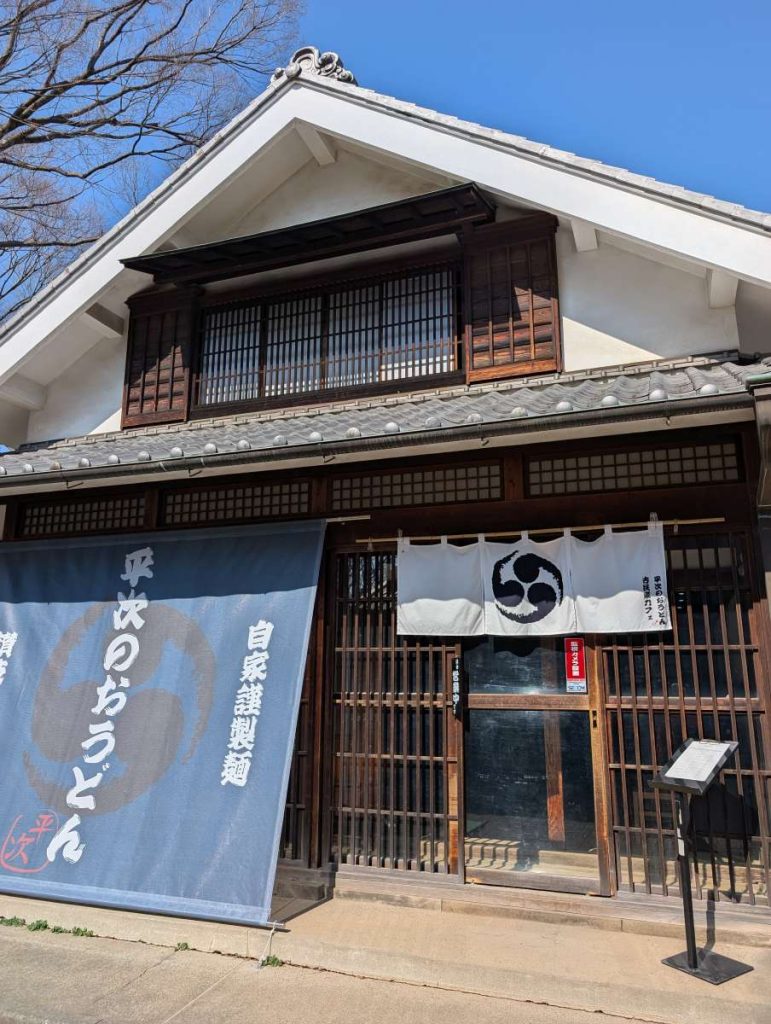
White plum blossoms in Fuchu. (©Japan Forward)
Judging by articles in English promoting tourism and what tourists post on social media sites, nothing looms larger than sakura (flowering cherry). While certainly impressive, sakura are only one of a succession of flowering trees and shrubs in Japan that mark the transition from winter to summer: plum (ume), sakura, azalea (tsutsuji), and hydrangeas (ajisai).

Having visited Koishikawa Korakuen on February 14, one of the best known ume viewing venues, my wife researched this subject and suggested a visit to Fuchu Municipal Museum Kyodo-no-Mori (府中市郷土の森博物館), which we made on March 1.

The official name suggests a building with static exhibits. However, this municipal facility is actually something of a botanical garden famous for its ume (Prunus mume) orchard, ajisai hydrangeas (ajisai), and higanbana (Lycoris radiata, red spider lily). It also has a small collection of buildings, both rural and urban, from the Edo and Meiji eras similar to the Edo-Tokyo Tatemono En.



Ume differ from the sakura of the somei yoshino variety most closely associated with Japan. Public parks and gardens that feature ume often have many varieties with different colors and blossoms, which bloom over a six-week or longer span.

Kyodo-no-mori has more than 1,100 trees in 60-plus varieties. A few trees are so similar to sakura that there is a sign explaining that they are in fact ume. Others are very different with a color range from faint red to deep dark red, almost purple. A few are yellowish.

Although the Kyodo-no-mori Ume Festival ends on March 9, there should be no shortage of trees in bloom for at least another week or more.


Photographing ume is, however, a challenge. Much of the beauty is in small clusters of flowers rather than the massive flower clouds produced by sakura. A shallow depth of field allows striking closeups while blurring otherwise distracting background details, but on a windy day, the branches move in and out of focus continually.


The Museum
Heavily oriented to local history, the museum has an extensive collection of prehistoric artefacts discovered in the Fuchu area and a collection of daily household items from the immediate postwar and 60s high growth period.

One large exhibit is devoted to the annual festival of the Okunitama Shrine located at the south end of the central shopping district in Fuchu. Held every year from April 30 to May 6, this festival is noted for its large and numerous dashi (山車) and attracts enormous crowds.


Eating
Kyodo-no-mori invites picnickers. There are two restaurants, one housed in a Meiji-era building. During special events, there are also "food cars" offering various types of street food snacks.


Access
Kyodo-no-mori is a pleasant 20 minute walk from Bubaigawara Station for the Keio and Musashino Lines (our choice), Fuchu Honcho Station for the Musashino and Nanbu Lines, and Koremasa Station on the Seibu Tamagawa Line. Bus service is available but hardly needed. Parking for 400 cars is available but shared with other nearby recreation facilities.
Kyodo-no-mori is adjacent to the Tamagawa Cycling course, making it accessible from Kawasaki or Tachikawa and points between. Most of Kyodo-no-mori has good access for wheelchair users.
Admission is ¥300 JPY ($2 USD) for adults.

Kyodo-no-mori is on Instagram, Facebook, and X (formerly Twitter) with information about special events and updates on what is in bloom.
We both very much enjoyed our visit and hope to go again when ajisai or higanbana are in bloom, possibly even cycling there.
RELATED:
- Beautiful Plum Blossoms in Tokyo at Peak Season
- Latest Sakura Forecast Released with Slight Adjustments
- Kameido Tenjin's Wisteria Color the Spring in the Kanto Region
Author: Earl H Kinmonth
Photographs by EH Kinmonth.
Find other stories about Tokyo and nearby areas by Dr Kinmonth.






